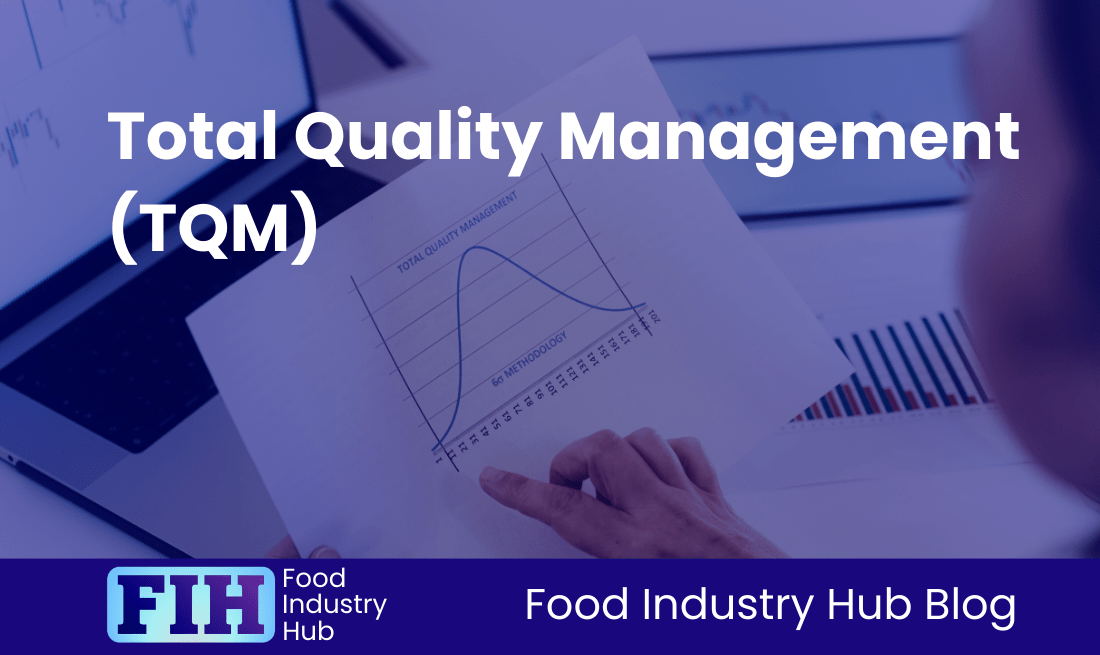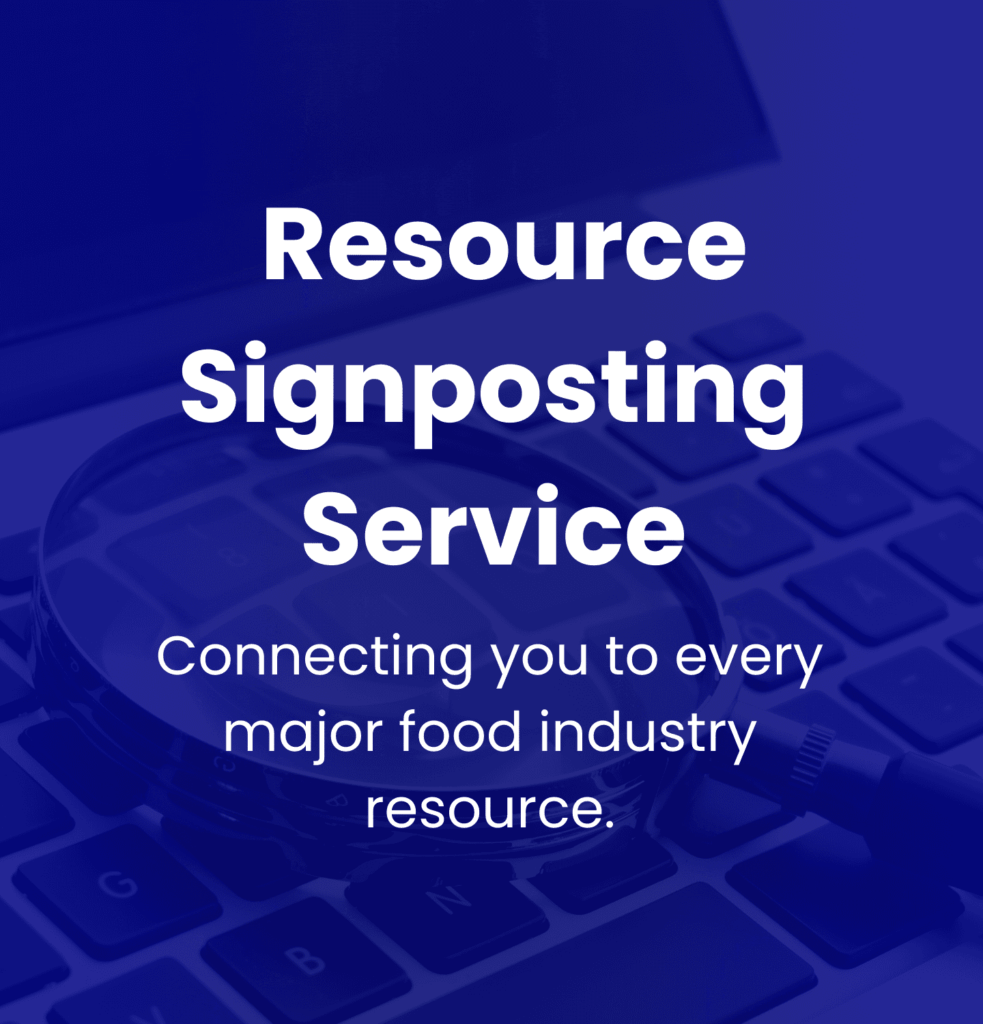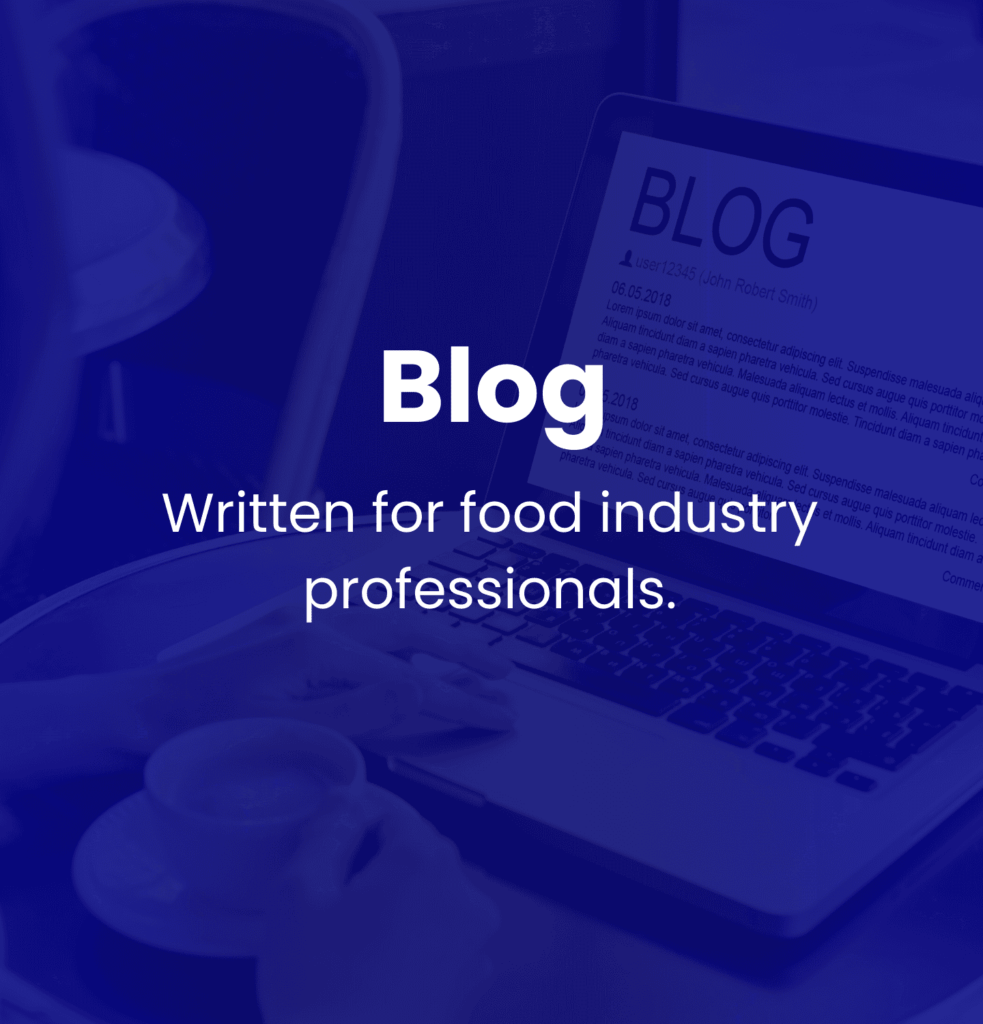Know: Fishbone Diagram for Root Cause Analysis
Contents
Introduction
Key Takeaways
Diving into Fishbone Diagram Basics
Fishbone Diagrams in Food Manufacturing: Practical Applications
Complementing Quality Assurance Frameworks with Fishbone Diagrams
Best Practices for Implementing Fishbone Diagrams
Navigating Regulatory Requirements with the Aid of Fishbone Diagrams
Conclusion
Introduction
In the field of food manufacturing, Root Cause Analysis (RCA) is integral to upholding food safety, quality, legality, and authenticity. RCA is implemented to pinpoint and resolve the underlying issues that could jeopardise food quality such as contamination or product faults, hence facilitating the implementation of effective corrective actions.
Understanding the Fishbone Diagram
A visual instrument referred to as a Fishbone Diagram, also known as an Ishikawa Diagram or a cause-and-effect diagram, is often employed in RCA. Seen as a fish skeleton, this diagram demonstrates a clear and structured approach to identifying possible causes of a certain problem. The head of the ‘fish’ embodies the problem at hand, while the bones branching out represent potential areas of concern – materials, methods, machinery, measurement, environment, and people.
Utility of Fishbone Diagrams in Food Manufacturing
In food manufacturing, Fishbone Diagrams play a significant role in addressing challenges related to safety and quality. Their ability to organise and categorise potential factors behind complex problems is particularly useful. For instance, in probing an instance of foodborne illness, a Fishbone Diagram can help distinguish whether the cause originated from ingredient quality, processing methods, or hygiene practices. Through identifying these root causes, proactive measures can be put in place to mitigate the risks of recalls and ensure compliance with relevant regulations.
Overview of Key Discussion Points
This article aims to explore various aspects of Fishbone Diagrams in the context of root cause analysis within the food manufacturing industry. Areas of discussion will include:
- Fundamentals of Fishbone Diagrams: A closer look at the construction and effective utilisation of these diagrams.
- Practical Application: Case studies exhibiting how Fishbone Diagrams can be applied in the real world to discern and address safety and quality issues.
- Integration with Quality Assurance Frameworks: How the use of Fishbone Diagrams can complement existing quality management systems.
- Best Practices: Guide to ensuring effective implementation, including collective validation approaches.
- Regulatory Considerations: Awareness of relevant regulatory frameworks and compatibility of RCA tools with these governing standards.
By addressing these areas, professionals in the food industry can gain valuable perspectives on how Fishbone Diagrams can optimise their efforts in maintaining high standards of safety and quality.
Key Takeaways
Fishbone Diagrams, otherwise known as Ishikawa diagrams, are highly effective tools in advancing food safety in manufacturing processes. By visually outlining potential causes of a problem—represented typically as a fish skeleton with the issue at the head and causes as the ribs—these diagrams make possible a comprehensive root cause analysis. Such an approach broadens the understanding of the numerous factors affecting food safety and boosts compliance with industry norms.
Enhancing Food Manufacturing Processes
The inclusion of Fishbone Diagrams considerably improves food manufacturing operations. These diagrams empower teams to methodically pinpoint and prioritise the root causes of quality and safety problems, leading to more effective problem-solving and process enhancement. For example, addressing identified areas like materials, methods, and machinery enables manufacturers to initiate changes that amplify food quality and minimise safety risks. The collaborative attribute of this tool facilitates cross-functional input, bringing varied viewpoints to enrich the analytical process.
Integration with Quality Assurance Frameworks
Embedding Fishbone Diagrams into existing quality assurance models guarantees continued effectiveness and sustainability in managerial practices. This incorporation encourages organisations to concentrate on root causes rather than merely troubleshooting symptoms, promoting a culture of continuous enhancement. Manufacturers must frequently review and verify the use of these diagrams against actual data to detect recurring issues and fine-tune corrective actions.
Maximising Effectiveness through Best Practices
The use of Fishbone Diagrams also necessitates an appreciation of best practices to optimise their effectiveness. Involving cross-functional teams in the brainstorming phase, starting with a clearly articulated problem statement, and performing regular iterations on analyses are essential. Further, corroborating causes with real-world data bolsters the dependability of outcomes and prioritisation of remedial efforts.
Regional Regulatory Considerations
Regional regulatory aspects must not be discounted. Even if bodies like the FDA and its counterparts in other regions do not enforce the use of Fishbone Diagrams, their application assists in aligning with models such as the Food Safety Modernisation Act (FSMA) by exemplifying a systematic tactic to root cause analysis. This method proves useful not just in fulfilling regulatory prerequisites but also in advocating a proactive approach to food safety across diverse locations.
Food Industry Hub Management Systems can significantly boost the effectiveness of your food safety and quality management system, leading to improved confidence and elevated quality assurance throughout your operations.
Diving into Fishbone Diagram Basics
Also known as an Ishikawa Diagram or Cause-and-Effect Diagram, the Fishbone Diagram is a visual tool designed to identify and organise the root causes of a specific problem. The concept was brought to prominence in the 1960s by Kaoru Ishikawa, a highly respected Japanese quality control specialist. He initially applied this tool to enhance quality management processes, specifically at the Kawasaki shipyards [Source: Wikipedia]. Its unique visual shape, mirroring a fish’s skeleton, is instrumental in aiding team member recall and facilitates collaborative performance in problem-solving. This tool has proven extremely valuable, particularly in the food manufacturing sector.
Main Elements of a Fishbone Diagram
The Fishbone Diagram incorporates several essential components that allow an efficient and thorough analysis of a problem:
- Problem Statement (Spine): Presenting the core problem at the ‘head of the fish’ ensures the focus remains on the central issue. Articulating this problem clearly is indispensable for directing the attention of the team towards meaningful solution development.
- Category Branches (Bones): Long-standing issues are symbolised as bones branching off the spine. In the food manufacturing sector, these categories generally derive from the ‘6Ms’: Manpower, Machine, Material, Method, Measurement, and Environment. These categories are integral for a comprehensive exploration of potential causes across diverse aspects of production processes.
- Sub-Causes (Ribs): Smaller ribs extending from each bone represent specific or detailed root causes. This multilevel structure facilitates a deeper level of analysis, which can be further improved by employing strategies like the ‘5 Whys’ approach. This technique is designed to reveal underlying issues that extend beyond apparent symptoms.
Enhancing Decision-Making in Food Safety
Integrating the Fishbone Diagram into food safety contexts can substantially improve decision-making processes. By mapping out potential causes of problems such as contamination or quality defects, the diagram offers a defined approach that assists teams in recognising root causes. It encourages a systematic analysis of processes and environments, enabling teams to identify key areas that require attention and optimise resources for corrective measures. Engaging in collaborative discussions around the diagram can also generate a more in-depth understanding of issues, resulting in improvement in quality control and compliance with safety standards.
Key Terminology
- Ishikawa Diagram: Synonymous with the Fishbone Diagram, this term pays tribute to the tool’s developer, Kaoru Ishikawa.
- 6Ms: A classification system used to categorise causes in food manufacturing, it consists of:
- Manpower (Man): Human resources and allied factors.
- Machine: Equipment and technology.
- Material: Raw materials and inputs.
- Method: Operational processes and guidelines.
- Measurement: Standards and performance metrics.
- Mother Nature (Environment): External factors in the environment impacting production.
The Fishbone Diagram is a dynamic tool for root cause analysis, especially pertinent in the food manufacturing industry. An understanding and improvement of quality control processes is a necessity to maintain compliance and safety standards. The Diagram’s organised framework and capacity for collaborative insight make it an essential asset for initiating effective solutions and cultivating a culture of continuous development within organisations [Source: Reliable Plant].
Fishbone Diagrams in Food Manufacturing: Practical Applications
Fishbone diagrams, also known as Ishikawa diagrams, represent indispensable tools in executing root cause analysis within the food manufacturing industry. Their utility lies in aiding the identification and categorisation of potential problem causes by organising them into distinct branches. These branches encapsulate materials, methods, machinery, measurements, manpower, and the environment—a structured, visually-orientated approach that assists teams to reveal the root causes behind challenges in food safety and quality, which ultimately aids problem resolution and bolsters overall process improvement.
Identifying Material-Related and Operational Challenges
Fishbone diagrams offer particular efficacy in pinpointing material-related and operational challenges encountered within the food manufacturing industry. Suppose repeated quality issues related to a food product arise; the diagram can help scrutinise potential factors. Under the Materials category, aspects such as quality of ingredients and sourcing inconsistencies can be meticulously examined. Additionally, issues such as inappropriate storage conditions can be revealed as contributing factors to product deterioration. Methodical examination of these factors allows teams to expose deeper issues, like insufficient supplier scrutinisation or deficiencies in procedures for handling raw materials.
Operational challenges often encompass aspects concerning processes and equipment maintenance. In examining the Methods and Machinery sections of the diagram, teams can identify disparities, such as fluctuating cooking periods or equipment malfunctions. For example, a bakery could deduce that inconsistencies in their baking quality originate from deficiencies in oven calibration or inconsistent procedures for mixing. Incorporating environmental influences, like temperature variances and humidity levels, into the analysis can lead to proactive measures that bolster product standards.
Benefits of Process Mapping
Process mapping, utilising fishbone diagrams, markedly boosts both operational efficiency and effectiveness in managing quality. Process diagrams visually represent workflows, enhancing understanding of complex processes and expediting the identification of bottlenecks and inefficiencies. Studies suggest that fishbone diagrams enhance communication among cross-functional teams, strengthening collaboration and fostering shared understanding of production roles. The insights gleaned from the process of mapping also enable data-driven decision-making, ensuring operational improvements are evidence-based, align with industry quality standards, and can robustly respond to emerging challenges.
Strategies for Addressing Human-Related Causes
Causes relating to human factors often present substantial challenges within food manufacturing, including elements such as insufficient employee training or ineffective communication. Fishbone diagrams serve to highlight these factors, namely those categorised under the Manpower or Methods branches. By implementing targeted strategies, such as comprehensive training programmes that close competence gaps, and the establishment of open communication channels to encourage employee feedback, these human-oriented issues can be effectively confronted. Implementing motivational strategies can result in a more rigorous adherence to quality protocols, thereby enhancing process compliance and product quality.
Sign-up for the Food Industry Hub Mail Service
We regularly produce new content for food industry professionals, and the Food Industry Hub Mail Service is the best way to stay up to date with the latest additions.
Signup today to be added to the Food Industry Hub mailing list.
Complementing Quality Assurance Frameworks with Fishbone Diagrams
Fishbone diagrams, also referred to as Ishikawa diagrams, serve as an instrumental asset in root cause analysis and prove to be a valuable resource in underpinning the Hazard Analysis and Critical Control Points (HACCP) methodology. HACCP is a structured strategy conceived to pinpoint and manage hazards that may jeopardise food safety. Fishbone diagrams contribute to this cause by categorising potential origins of safety concerns, which, in turn, aids food manufacturers in visualising and methodically investigating these causes. This timely analysis of all risks pertinent to Critical Control Points (CCPs) in food production becomes an achievable task when backed by these diagrams.
Fortifying HACCP Methodology with Fishbone Diagrams
Using Fishbone diagrams grants organisations the power to structure the various probable causes into categories, an approach often termed as the 6Ms: people, materials, machinery, methods, measurements, and the environment. To illustrate, if a CCP, for example, temperature control, encounters an issue, the Fishbone diagram could be of great assistance in digging out the cause. This cause could range from equipment defects, shortfall in training to inappropriate procedures. An efficacious corrective action plan, enhancing food safety protocols, can be constructed and implemented from these insights, thus reinforcing the HACCP plan.
Implementing Fishbone Diagrams with ISO 22000
ISO 22000 is a globally accepted standard that outlines the requirements for an exhaustive Food Safety Management System (FSMS), and it inherently encompasses crucial HACCP principles. Integration of Fishbone diagrams within the ISO 22000 provision offers a structured approach towards risk analysis, in return augmenting the organisation’s overall quality management system (QMS). This incorporation plays a significant role in systematically identifying and managing hazards, synergising well with ISO 22000’s emphasis on ongoing improvement and preventive actions.
Deploying Fishbone diagrams in synergy with ISO 22000 bestows multiple benefits. Firstly, they enable a comprehensive risk assessment by revealing the root causes related to various hazards in the production process. Secondly, they ensure implemented corrective actions are precisely targeted and effective. Maintaining compliance with food safety regulations is an outcome, as is the establishment of a culture of continuous improvement where organisations are propelled to consistently assess and refine their practices based on root cause insights.
Promoting an Atmosphere of High-Quality Food Manufacturing
Implementing Fishbone diagrams has a substantial influence on facilitating a quality-orientated culture within food manufacturing spaces. This is due to their ability to engage employees across various functions of an organisation in the development of these diagrams. As a result, collaboration is encouraged, fostering a sense of shared responsibility towards quality. The use of Fishbone diagrams also turns an organisation’s approach towards quality improvement from a reactionary response to a proactive one. As employees become trained in root cause analysis, they are able to identify and rectify potential issues before they can develop into significant failures. This not only raises the company’s general quality standards but also nurtures a work environment where safety and quality are prioritised at all production levels.
Key Terminology
- ISO 22000: This is an international standard specifying requirements for a food safety management system. It promotes a systematic approach to identifying and mitigating food safety risks throughout the supply chain.
- Quality Management Systems (QMS): This is a structured system that outlines procedures, responsibilities, and processes designed to ensure quality policies and objectives are consistently met. In food manufacturing, it typically integrates HACCP and effective quality assurance practices to maintain compliance and enhance safety.
Merging Fishbone diagrams with HACCP and ISO 22000 not only amplifies the efficacy of quality assurance frameworks, but also promotes an organisational culture committed to excellence in food manufacturing practices.
Best Practices for Implementing Fishbone Diagrams
Fishbone Diagrams are a powerful tool for Root Cause Analysis (RCA) in food manufacturing, providing a significant boost to problem-solving capabilities and supporting food safety measures. One key to optimising their use involves the integration of complementary tools like Pareto charts and methodological approaches such as the 5 Whys technique.
Incorporating Pareto Charts
Pareto Analysis, a revered quality management approach, is instrumental in identifying and prioritising the chief causes of issues based on their frequency or impact. By incorporating Pareto’s famous 80/20 rule, it’s clear that a majority of problems – approximately 80% – often arise from a minor fraction of potential causes – about 20%.
Once potential causes have been unearthed using a Fishbone Diagram, integrating a Pareto chart can assist teams in prioritising these causes effectively. Teams should begin by categorising the identified causes into groups, such as Materials, Machinery, Methods, Measurement, and Manpower. By collating and analysing data on the frequency or severity of these causes, you can produce a Pareto chart that visually highlights which factors have the most significant influence on the issues identified. This data-driven prioritisation ensures that improvement efforts are directed where they can make the most meaningful impact on food safety and quality management.
Using the 5 Whys Method
The 5 Whys technique is a potent supplement to Fishbone Diagrams. It involves asking “Why?” repeatedly until straightforwardly arriving at the root cause of a problem. To apply the 5 Whys successfully, initiate the process with the primary cause found in each branch of the Fishbone Diagram, then systematically question each resulting cause. If, for instance, a category such as Materials attributes a specific ingredient as problematic for quality, asking “why?” may reveal issues like variability in supplier consistency or procurement quality controls. This technique is efficient in uncovering process complexities that aren’t immediately evident.
Validating Data
Ensuring the robustness of the identified causes is pivotal to any successful Root Cause Analysis. This requires the collection and analysis of actual data from numerous sources, including production records, quality control reports, and customer feedback, to validate the findings derived from the Fishbone Diagram. Validation of data is essential as it ensures that corrective actions are rooted in reality. For example, if contamination rates are flagged as a concern, teams should compare the contamination levels before and after implementing changes. This approach increases the trustworthiness of the analysis and better positions the organisation to implement effective actions.
Key Terms Explained
- Pareto Analysis: A statistical procedure used to prioritise problems, based on the concept that a disproportionate number of effects often come from a small number of causes. This technique helps organisations identify and target their most significant issues.
- 5 Whys: A simple yet effective method for determining the root cause of an issue by continually asking “Why?” It’s invaluable in clearly uncovering underlying problems that need attention.
Implementing Best Practices
To successfully implement these practices, it’s necessary to cultivate a collaborative environment, inviting team members to share insights and expertise. The Fishbone Diagram should be regularly revisited and updated with new data or findings to keep it actionable. Practical action plans should then be developed to address the identified root causes, while continually assessing the effectiveness of the implemented solutions. By utilising Fishbone Diagrams, Pareto charts, and the 5 Whys methodology, food manufacturing businesses can significantly enhance their root cause analyses, leading to lasting improvements in quality and safety.
Navigating Regulatory Requirements with the Aid of Fishbone Diagrams
As powerful tools for root cause analysis, Fishbone Diagrams or Ishikawa Diagrams are invaluable in the food manufacturing field. These diagrams aid in pinpointing potential problem sources, thereby improving regulatory compliance with standards laid out by the UK’s Food Standards Agency (FSA), the European Union’s EC 852/2004 regulation, and the United States’ Food Safety Modernization Act (FSMA). In this section, we examine how these diagrams align with these pivotal regulations and underline their versatility in different jurisdictions.
Alignment with UK’s Food Standards Agency (FSA) Regulations
The Food Standards Agency (FSA) is entrusted with ensuring food safety and hygiene within the UK. Even though FSA regulations do not directly necessitate the use of Fishbone Diagrams, these tools significantly aid in streamlining compliance efforts. By helping food manufacturers systematically spot potential non-compliance sources like inappropriate handling, storage, or processing practices, Fishbone diagrams are instrumental. They classify causes into categories such as Methods, Materials, Machines, Manpower, Measurement, and Environment. This approach helps in identifying gaps in food safety protocols and encourages stricter adherence to FSA food safety management system standards.
Role in Ensuring Adherence to the European Union’s EC 852/2004 Regulation
The EC 852/2004 regulation sets down hygiene requirements across the EU food supply chain and underscores the necessity of efficient food safety management systems. Fishbone diagrams contribute extensively in this aspect by enabling food manufacturers to carry out thorough hygiene-related failure analyses. By reviewing areas like cleaning protocols, employee training, and equipment maintenance, these diagrams aid in unveiling root causes that may impair food safety. Employing this strategy bolsters compliance with hygiene regulations and facilitates the implementation of effective corrective actions.
Role in Ensuring Adherence to the United States Food Safety Modernization Act (FSMA)
The Food Safety Modernization Act (FSMA) promotes the transition from reactive to preventive food safety measures. Fishbone diagrams reinforce this preventive approach by assisting food manufacturers in analysing potential hazards in their processes. Categorising factors like Materials, Machines, and Manpower allows manufacturers to recognise risks associated with ingredient sourcing, equipment hygiene, and staff training. This meticulous analysis harmonises with FSMA’s emphasis on risk reduction and bolsters the framework for enhancing food safety standards across production processes.
Versatility in Meeting Food Safety Standards Across Diverse Jurisdictions
Fishbone diagrams exhibit remarkable adaptability, making them not just useful for specific regulation compliance, but also as a versatile tool in various regulatory frameworks. Their flexible nature allows food manufacturers to mould the diagram categories to suit local regulatory requirements, hence aiding compliance efforts across diverse jurisdictions. For companies operating across multiple countries, this adaptability is key to address a myriad of food safety challenges and promote the collaborative identification of risks, enhancing global compliance with respective regulations [Source: PPML].
Key Regulatory Terms
- Food Standards Agency (FSA): The regulatory body of the UK that secures the maintenance of food safety standards across the food industry.
- Food Safety Modernization Act (FSMA): U.S. legislation emphasising on preventing food safety issues instead of responding to incidents after they occur.
- EC 852/2004: An EU regulation focused on instituting hygienic practices through the food supply chain.
The adoption of Fishbone diagrams provides food manufacturers with a strategic mechanism to navigate the intricate regulatory environment surrounding food safety. These diagrams facilitate systematic identification and resolution of compliance-related issues across different jurisdictions.
Conclusion
Recap of Main Themes
The Fishbone Diagram, synonymous with the Ishikawa diagram, stands as a strong tool for conducting root cause analysis, specifically within the food manufacturing industry. It utilises a structured layout to categorise potential causes into main groups consisting of people, processes, materials, machinery, measurements, and environment. This complete methodology bolsters problem-solving by guaranteeing comprehensive examination of all factors that could influence a particular issue, yielding targeted solutions.
Within the scope of quality management, Fishbone Diagrams display a high degree of versatility. They have proven beneficial across diverse sectors encompassing manufacturing, healthcare, and food production. Their keen edge in accurately identifying root causes of flaws or safety hazards makes them instrumental in preventing repetitive issues and endorsing continual improvement.
The Role of Fishbone Diagrams in Food Manufacturing
In the food manufacturing industry, employing Fishbone Diagrams within quality management strategies serves numerous salient purposes. Their structured problem-solving approach enables systematic analysis of root causes, leading to the formation of more effective and informed solutions. These diagrams also encourage collaboration among team members, which optimises understanding and decision-making during the analysis process.
The use of Fishbone Diagrams not only regulates adherence to standards but also encourages a culture of safety and quality. By addressing fundamental causes of safety matters, companies are better equipped to fulfil legal obligations and uphold a commitment to authenticity.
Industry-Wide Skill Requirement
Expertise in the application of Fishbone Diagrams is a sought-after skill for professionals in the food manufacturing industry. This proficiency enables teams to conduct comprehensive reviews of operational challenges, detect bottlenecks, and implement effective corrective measures. It propels a proactive approach to prevent future quality issues and enhance operating efficiency.
Advocating the Use of Fishbone Diagrams
It is recommended strongly for food manufacturers to infuse their quality management frameworks with Fishbone Diagrams, while keeping regional regulations at the forefront. These diagrams are adjustable and can be applied to various situations—from resolving consumer feedback to fine-tuning production practices. Conformity to local safety and quality norms is essential to sustain continuous operational success and legality in the industry.
In a nutshell, Fishbone Diagrams play an irreplaceable role in enhancing safety, quality, and compliance within the food manufacturing sector. Their strategic use not only resolves immediate challenges but also nurtures a proactive, collaborative ecosystem, crucial for sustained success in an intensively competitive landscape.
About The Food Industry Hub Knowledge Centre
The Food Industry Hub knowledge centre delivers informative content on a variety of topics pertinent to the food manufacturing industry.
You can return to all topics by clicking here.
From The Food Industry Hub Blog
Expanding on this topic with related content from our blog.














